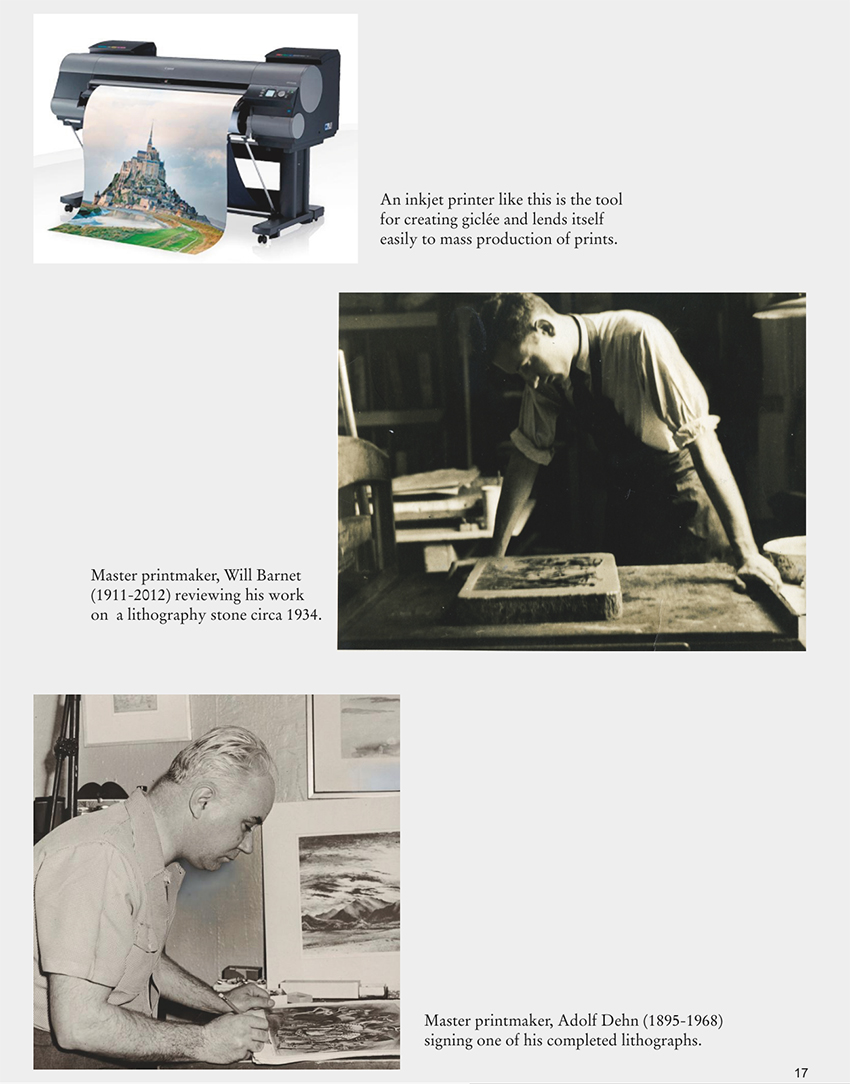|
Giclée Explained
Dear Artsperts:
I recently received an e-mail advertising the sale of an "oil painting print". They also had an acrylic painting print. What does that mean? Are the prints they are selling done in oil and acrylic?
Signed,
Having an Inkling
Dear Inkling,
“Oil painting print” and “acrylic painting print” is a new and very clever marketing scheme intended to confuse the consumer. It is really a reproduction of a painting that may have been originally painted in oil, acrylic, watercolor, tempera, or even collage. Any 2-dimensional work of art can be photographed or scanned in high-resolution then printed using high definition inkjet printers. The result of which is a digital print. These printers do not print in oil or acrylic, but rather use printer ink. But they can be printed on a variety of materials, including canvas.
The most often used term for a digital print is giclée. This term was coined by a printmaker in the early 1990s and is pronounced “Gee Clay” or “Zee Clay”. It loosely translates as “to spurt” which is in effect what inkjet printers do – spurt ink on a surface. An inkjet or digital print does not sound as appealing as a giclée print. The term was made-up as a marketing ploy to sound vaguely French. Oil painting print is just another marketing scheme to make the product sound better than what it is – a high quality photocopy of a work art.
This new era of digital print making eliminates the added skill and craftmanship that was once necessary in the traditional printmaking process. Traditional prints, be it an etching, engraving, lithograph, or screenprint entailed hours in the studio with stone, screen or metal plates, chemicals and other complex equipment. Master printmakers had years of experience and were highly respected for their craftmanship. Giclée is effortless in comparison and as such is frowned upon by fine art galleries and museums.
Artists may also “enhance” giclée prints by directly painting on top of the print, sometimes this is called hand-embellished. These are sometimes passed off as originals since the print was altered slightly by the artist. Don’t be fooled by these as they are not considered original works of art by fine art galleries and museums.
A final aspect of giclée marketing intended to make the products sound more appealing is “hand wrapped” or “gallery wrapped” canvas. In reality you are getting less of a product. Traditionally works of art have always been sold framed, unless the artist intended otherwise. Hand wrapped just means you are buying an unframed work. A step up from purchasing an unstretched, rolled canvas, but in reality, you are getting less not more!
The over-commercialization of art has resulted in very clever marketing schemes. Unfortunately, it muddies the water for fine art and creates a great deal of confusion in our profession.
Sincerely,
The Artsperts
|


